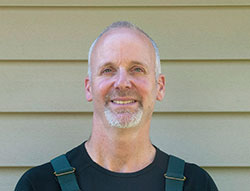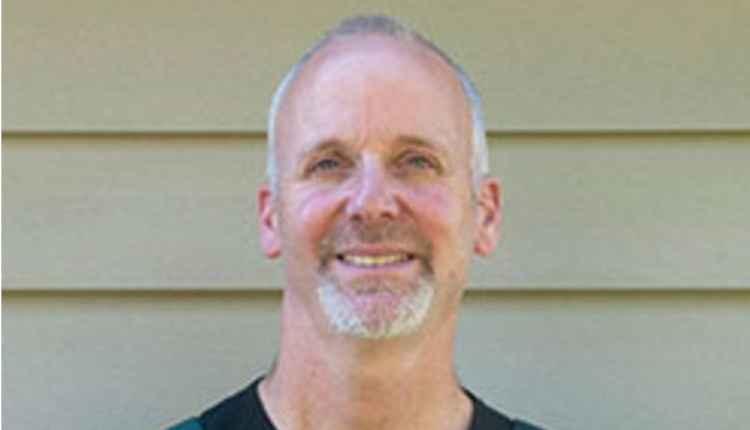The author is a partner and large animal veterinarian at Thumb Veterinary Services in Deckerville, Mich.

I have observed, over the years, the dairy farmers who are hardcore throttle enthusiasts. They rarely ever coast, let alone use the brakes, as they maneuver through the daily responsibilities of providing for the family and managing a dairy enterprise.
Most dairy farmers have “to-do” lists in their daily planners that are lengthy, ambitious, and often times, hard to complete. I get it. I have one of those planners myself. But maybe, coming upon the wake of a new year, rather than bearing down on the accelerator to keep going through 2022, perhaps we need to make some subtle changes.
Maybe we need to consider how the paradox “less is more” might apply to your herd. Consider how backing off the accelerator a bit might allow you to enjoy this dairy life even more. Who knows, perhaps your herd will even respond in a tangible way.
A less busy day for the cows
Unlike their owners, most dairy animals prefer to be couch potatoes and follow the same routine day to day. Sure, they totally enjoy a short “crop tour” through a breached gate from time to time, but their performance is not adrenaline driven. Excellent milk production is driven by copious amounts of rest. So, how can we improve rest on our farms?
Make your assessment by observing the daily and weekly time budgets for the cows. How can we have fewer cows standing? More deep beds? Less time in the holding pen? Shorter time spent in headlocks, at management rails, or in pens awaiting their next move?
I am pleased when I witness farms that have facilities and developed routines that allow cows to leave and return “back home” after milking in less than 60 minutes, two or three times daily. Great job!
Take a hard look at your transition cows. Can we provide a less hectic day as we prepare them for the upcoming lactation?
Experts tell us that the average cost of calving, starting from dry-off until successful entry into the lactating herd, ranges from $200 to $500. It’s even more expensive if transition disease is present. Wow! What an important area this is to minimize excessive intervention, too many pen moves, and too much crowding and standing.
Trying to do too much
We all recognize the importance of minimal intervention at calving, both for the dam and the calf. I have witnessed over and over the huge difference in fresh cow performance based on minimal injections (including vaccinations), minimal unnecessary assistance at calving, and minimal time spent away from rest, space, feed, and water. Simply put, many times we just get in the way! Less is sometimes best.
I was reminded of this as my wife and I had an outing in mid-December on our property. I knew we had a certain task at hand to do — to search for and cut the hallowed Christmas tree. But it was a beautiful day — warm and sunny. What a perfect day for a little pheasant hunting.
My wife was patiently waiting in the truck as I was trying to nonchalantly load a dog, gun, ammo, and blaze orange paraphernalia into the bed of the truck. I just figured we could “kill two birds with one stone.” I quietly mentioned, “I’ll take the gun along just in case.” She rolled her eyes. She knew.
The trees were located in a great patch of under bush, surrounded by corn stubble and great bird cover. The thrill of the hunt overtook me. Jane was heading for a tree that caught her eye, but I needed her! The chance to have two bodies walking parallel on a well-managed wildlife floor, flush with birds, was surely calling her name also!
Two hours later, after trudging through marsh, tall standing vegetation, and uprooted corn stubble, my bride was not impressed. No tree had been cut yet. She was hot and past impatient to get the task at hand finished while I was rewarding my faithful hunting companion for his ability to flush out the roosters and trying to load everything back in the truck.
My wife emerged from the tree grove, dragging a tree, with furrowed brows. She handed me the saw and said, “Here, do you think you could possibly cut some pine bows down when you’re done gazing at that pheasant and loving on your dog?”
The tree didn’t get decorated that day. We ran out of time to even put it in the house. I tried to pack too much into that afternoon. I had good intentions, and both were good activities, but it was too much to get accomplished and there was some frustration after the fact.
Bringing it back to cows
So, with less being more, assess your fresh cow monitoring program. Are we spending too much time, effort, and money on broken fresh animals?
We, inadvertently at times, are too laborious in our detection of disease. Many have benefited from focusing attention and therapy to just the animals that need it by becoming more attentive to the animals at risk for twins, dystocia, milk fever, lameness, and so forth. They focus on just those cows, rather than getting in the way of their healthy herdmates.
Others have invested in modern technology systems that allow the cows to tell us how they are feeling, rather than us trying to guess. These advancements in technology work quite well, assessing individual parameters, such as activity, rumination, fever, inflammation, and more. They do not provide a diagnosis, but they are very beneficial in identifying animals at risk that require additional attention. Again, this means less intervention for the healthy herdmates.
Evaluate your vaccination schedules closely. Are we guilty of too many vaccines? We are fortunate to have a wide selection of highly efficacious bovine vaccine products. We rely on modern immunization for specific pathogens to promote herd well-being, minimize disease, and provide a hedge of protection. However, no vaccine is completely effective. All require a desired immune response, utilizing inflammation and energy expenditure to mount the desired protection.
Often, I see vaccination schedules, both in transition cows (prefresh to fresh) and transition calves, that are too much, particularly in the face of the unavoidable stressors placed on these animals. Under these situations, the excessive use of vaccinations may aggravate rather than alleviate disease. As I was taught decades ago by my veterinary professors, “Above all, do no harm!” That is still valid today.
We also might be guilty of too much therapy. Perhaps our milk fever treatments are too much? Too much dextrose? Too many drenches? Too many mastitis tubes? We must continue to focus on prevention — it is up to us!
I had more thoughts here, but as usual, I’m too busy! I want to let you ruminate on a few more, though. Are we feeding too much energy to dry cows and bred heifers? Are we raising too many replacements? Are cows sorting the TMR too much? Could we be giving fewer reproduction shots? Are we trying to do too many turns per hour in the parlor? These are a few thoughts for you to ponder.
Ease up on the gas
Life on the farm is busy. But I do believe there is room for dialing down some of the busyness, perhaps allowing our cows more efficient periods of rest. Take the opportunity to provide for more “at ease time,” not only for your herd, but also for you and your families’ daily schedules. Happiness, great relationships, peace, and health are pretty important components to quality of life for our families and our farms. Sometimes, less is just more.
In case you were wondering about that rooster pheasant, it was a beauty! Large-bodied, long spurs . . . impressive to say the least. My bird dog performed awesomely. I have a feeling, however, that there won’t be a mounted pheasant on our wall any time soon.










